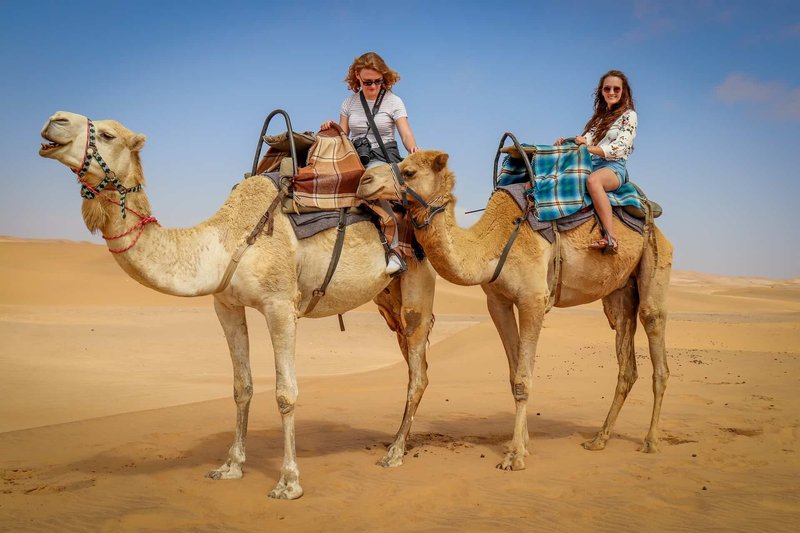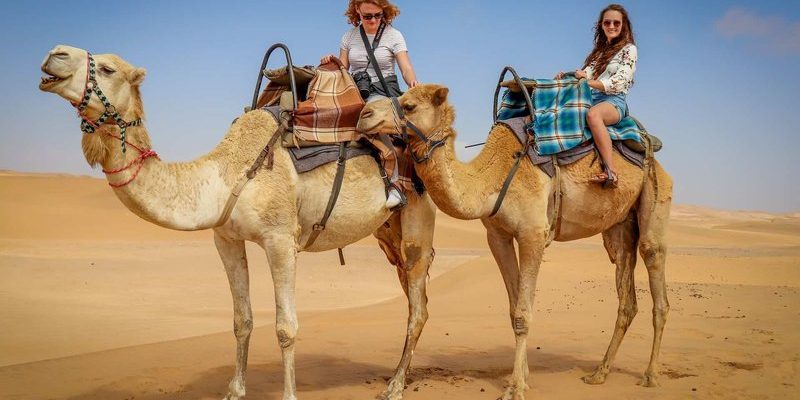
Now, before you jump on that saddle, there are a few things to consider. From proper training to the right equipment, and of course, safety tips, understanding these elements can help you make the most of your camel riding experience. So, grab a cup of coffee, and let’s dive into the fascinating world of camel riding together!
The Basics of Camel Riding
Camel riding is a popular activity in desert regions, where these charming creatures have been companions to humans for thousands of years. Picture this: camels are often called the “ships of the desert” because they can navigate sandy terrain with ease, just like how ships sail through water. This unique comparison helps us appreciate how camels have adapted to their environment, making them excellent animals for riding across vast stretches of sand.
Understanding a bit about camels themselves can enrich your riding experience. There are two main types: the dromedary, with one hump, and the Bactrian, which has two. Dromedaries are more common and are primarily found in the Arabian Peninsula, while Bactrians are native to Central Asia. Their humps store fat, which is a source of energy, and this makes them incredibly resilient in harsh conditions. Knowing your camel’s breed can add an extra layer of appreciation when you’re up there, taking in the view.
Besides the thrill of riding, it’s important to realize that camel riding is not just about hopping on a saddle. It involves understanding how to interact with the camel and respecting its nature. Camels are social animals, so they can really pick up on your energy. Being calm and confident goes a long way in ensuring both you and the camel have a pleasant experience.
Training for Camel Riding
Before you even think about climbing up, investing some time in training is essential. Just like riding a horse, it’s crucial to learn how to communicate with your camel. Most camel riding experiences begin with a short training session where you’ll get familiar with the camel’s behaviors and how to mount and dismount safely. Many camel farms or tour operators have experienced guides who can help you feel comfortable.
During your training, you might learn how to approach the camel. Here’s the thing: camels can be a bit stubborn or moody, depending on their mood. So, approaching them calmly and confidently can help establish a bond. When you’re ready to mount, it usually involves stepping on a platform or a sturdy step to get up to the saddle. It’s just like climbing onto a tall bike; you want to make sure you do it smoothly and confidently.
You might be wondering: how do you stay balanced up there? While riding, you’ll want to lean slightly forward and hold onto the saddle tightly. Camels can have a somewhat jerky motion when they rise to their feet or sit down. So, being prepared for that transition helps keep you steady. Plus, learning to read your camel’s movements will enhance your connection and keep you safe.
Essential Equipment for Camel Riding
When planning to go camel riding, having the right equipment can make a big difference in your comfort and safety. First things first, let’s talk about the saddle. Unlike a horse saddle, a camel saddle is usually wider and designed to distribute your weight evenly. It often has a handle or a strap to help you hold on, especially when the camel rises or sits down.
You’ll also want to wear appropriate clothing. Loose, comfortable clothes are ideal since they allow you to move freely. Think of breathable fabrics that can withstand the heat if you’re riding in a warm climate. Sturdy footwear is essential too—closed-toe shoes or boots will protect your feet from accidental stomps.
Don’t forget about sun protection! If you’ll be out in the desert sun, wearing a wide-brimmed hat, sunglasses, and sunscreen can make your ride much more enjoyable. Imagine cruising through the dunes without worrying about a sunburn; it just adds to the experience.
Lastly, every camel ride should come with some basic safety gear, like a helmet if you’re a beginner or riding in a particularly bumpy area. Some operators will provide helmets, but if you’re uncertain, it’s totally okay to ask about it. Safety should always come first, right?
Safety Tips for Camel Riding
Let’s get real: safety is super important when it comes to camel riding. Seeing these majestic creatures can be awe-inspiring, but you want to be smart about it. First, always follow your guide’s instructions. They’re usually knowledgeable about the camels and how to navigate them, so listen carefully to their advice.
When you’re mounting or dismounting, do it slowly and carefully. Remember, camels can be a bit unpredictable, and they might shift unexpectedly. Being cautious helps both you and the camel stay stable. If you’re not sure what to do, never hesitate to ask your guide for assistance.
Another tip is to stay aware of your surroundings. Camel riding often takes place in wide-open areas, and if you’re not careful, you might find yourself distracted. Keep an eye on the camel in front of you, and be mindful of any changes in the ground or other animals that might be nearby. This helps you react quickly if something unexpected happens.
And here’s a little secret: camels can be quite expressive! If your camel seems anxious, snorts, or shifts around, it’s worth taking a moment to pause and reassess the situation. Staying calm and collected in these moments can help reassure your camel that everything is okay.
The Joy of Camel Riding
Despite all the training, equipment, and safety tips, the joy of camel riding is hard to match. Just imagine it: riding through golden sands at sunset, with the wind in your hair and the thrill of exploration all around you. It’s not just about the ride; it’s an entire experience that brings you closer to nature and culture.
Many places offer camel trekking experiences that can stretch for hours or even days. These journeys can lead you to stunning landscapes, ancient ruins, or local villages that give you a deeper sense of the culture. It’s like stepping into another world where time feels less hurried.
If you’re looking to connect with the local community, camel riding can be a great way to do that. Many guides are passionate about sharing the stories of their land and the camels themselves. Plus, meeting other riders can feel like being part of an exclusive club, sharing tips and tales from your experiences.
In summary, camel riding is not just another activity; it’s an adventure that invites you to explore, learn, and grow. From training and equipment to safety tips, you can step into the saddle knowing you’re prepared for an unforgettable experience. Who wouldn’t want to create such fantastic memories?
Camel riding can open your eyes to a world that feels both ancient and alive, so why not consider it for your next adventure? With the right knowledge and mindset, you’re sure to enjoy every moment on your gentle giant!

